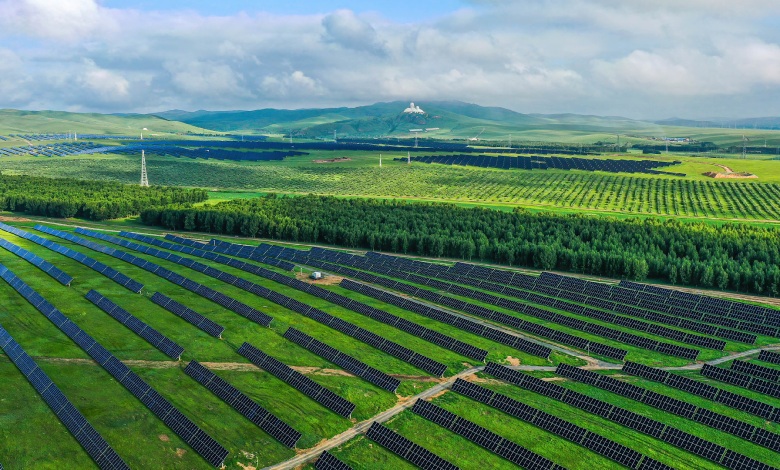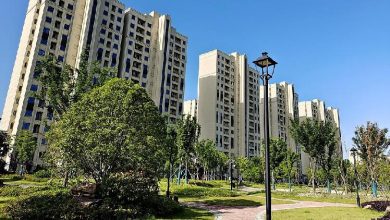China to enhance systems for green, low-carbon development


A resolution on further deepening reform comprehensively to advance Chinese modernization was adopted at the third plenary session of the 20th Central Committee of the Communist Party of China held in Beijing last week.
Ecological conservation was highlighted in the resolution. It emphasizes the reform of systems and mechanisms to realize goals such as carbon cutting, pollution reduction, green development and economic growth, along with more active responses in facing the challenges of climate change.
<img src='https://news.cgtn.com/news/2024-07-24/China-to-enhance-systems-for-green-low-carbon-development-1vv2EZcYVMY/img/c75229f61a354f18b90318bbc80ce1d2/c75229f61a354f18b90318bbc80ce1d2.jpeg' alt='A 100-megawatt photovoltaic project in Tongliao City, Inner Mongolia Autonomous Region, China, July 24, 2024. /CFP'
Three sections are outlined in the resolution to enhance systems and mechanisms.
The first section describes improving basic systems, which includes a more precise environmental management, monitoring and evaluation system that could act against the different conditions of each region, and a control and permission system for land use that can cover more regions and types of land. It also talks about enhancing systems to defend assets of natural resources and creating a legal code for eco-environmental protection.
The second section describes improving systems for eco-environment governance, which is closely linked to pollution reduction. It says China will enhance its monitoring system for pollutant discharge, by which various pollutants such as waste gas, water, solid waste and noise can be managed in a comprehensive and precise method. A credit system will also be established to help monitor pollution, along with the adoption of a disclosure system through which information of the enterprises that fail to obey environmental protection regulations will be disclosed to the public.
The resolution puts forward measures to improve systems protecting marine resources and biodiversity. It says China will enhance the mechanism for realizing the value of ecological products and promote compensation for ecological and environmental damage.
The last part of the resolution illustrates a series of major plans to improve the mechanisms for green and low-carbon development.
It says China will direct more financial support towards the development of green and low-carbon industries, and improve systems to promote green consumption. It also talks about enhancing the green government procurement system through which the government will prioritize purchasing green products.
The resolution highlights establishing and improving systems to help realize the country’s carbon cutting. It says China will build a number of new systems to manage carbon emissions, including a statistical accounting system to calculate carbon emissions, a certification system to identify low-carbon products, and a management system to monitor the carbon footprint of products.
It will also further enhance the carbon trading market system and the greenhouse gas emission reduction trading system. With all these steps, China is pushing forward its goal of reaching carbon neutrality by 2060.
China has entered a new stage of development where green transformation of the economy and society is increasingly crucial. The reform measures outlined in the resolution are strong and comprehensive. They will help the country balance the relationship between development and ecological protection, and boost high-quality development in a healthy ecological environment.





